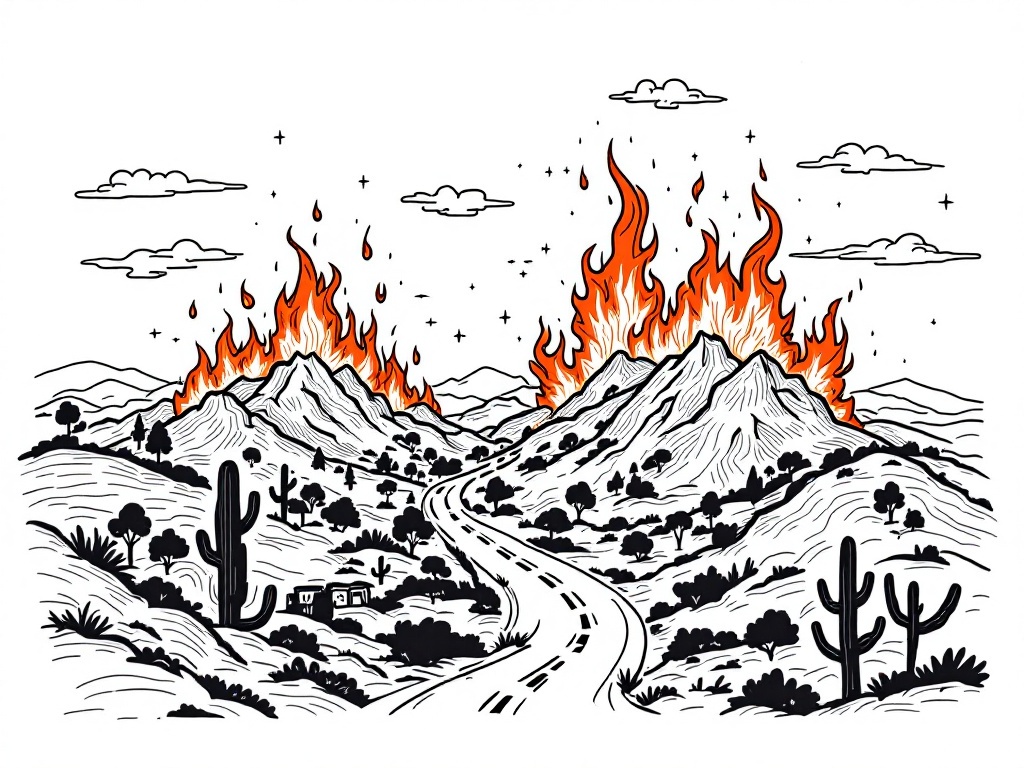Los Angeles Wildfires: Economic and Health Threats Intensify

Los Angeles, Thursday, 9 January 2025.
Wildfires in Los Angeles have caused at least five deaths and extensive evacuations, threatening economic stability and public health. The disaster underscores the need for better forest management.
Unprecedented Scale of Destruction
The Los Angeles region is grappling with multiple devastating wildfires that have burned over 27,028 acres since January 7, 2025 [6]. The Palisades fire, now the most destructive in LA history, has consumed more than 17,000 acres and destroyed over 1,000 buildings [4]. The Eaton fire, burning north of Pasadena, has claimed at least five lives and scorched more than 10,000 acres [4][1]. The situation has forced approximately 70,000 residents to evacuate their homes [6][7].
Economic Impact and Infrastructure Damage
The economic toll is mounting as the fires continue to ravage the region. Nearly 400,000 customers lost power as of January 7 [1], while approximately 1.5 million Californians experienced electricity outages across various counties [6]. Critical infrastructure has been severely impacted, including the historic Pasadena Jewish Temple & Center, established in 1941, which was completely destroyed by the Eaton fire [4]. The Getty Villa Museum, however, has reported no structural damage [6].
Public Health Crisis and Emergency Response
Local hospitals are reporting a surge in smoke inhalation cases, while 18 school districts have been forced to close [6]. Emergency services are stretched thin, with over 1,400 firefighters deployed to combat the blazes [6]. The situation is further complicated by a water crisis, as authorities issued a ‘Do-Not-Drink Water’ alert for Pasadena and Eaton Fire evacuated areas on January 8 [5]. Relief organizations including the LA Regional Food Bank have mobilized to support affected communities [3], while World Central Kitchen is providing immediate assistance to first responders and evacuees [7].
Political Response and Future Concerns
The disaster has sparked political controversy, with former President Trump criticizing the current administration’s response [1]. Meanwhile, President Biden has issued a major disaster declaration and approved federal assistance, including military support [6]. Climate scientists warn that conditions could worsen, with UCLA climate scientist Daniel Swain noting that ‘what’s going on now is only just the beginning’ [6]. Wind gusts are expected to reach up to 160 km/h (100 mph), marking this as the worst windstorm in a decade [6].
Sources
- www.nbcnews.com
- www.npr.org
- www.lafoodbank.org
- www.bbc.com
- www.nbclosangeles.com
- www.aljazeera.com
- time.com